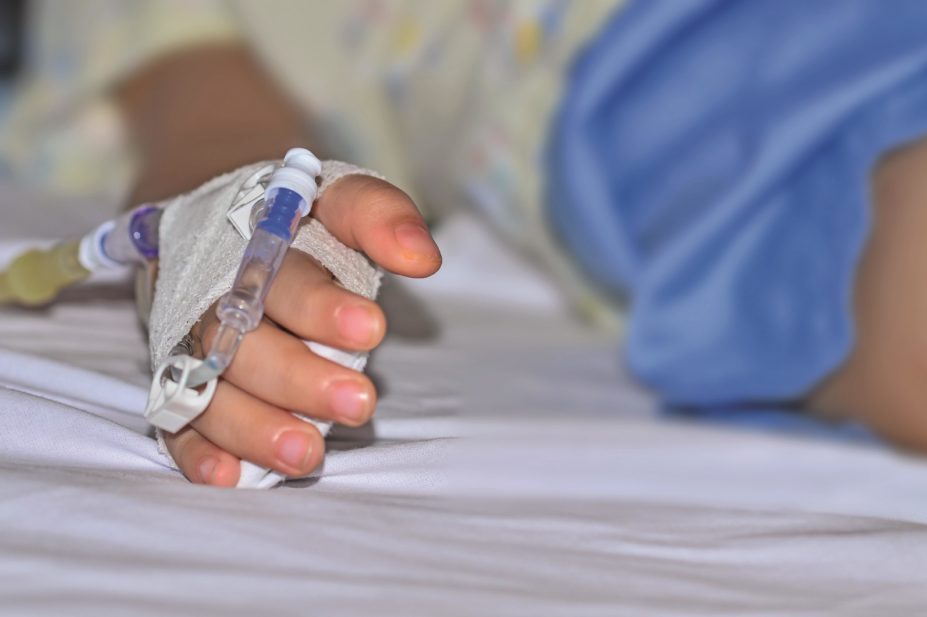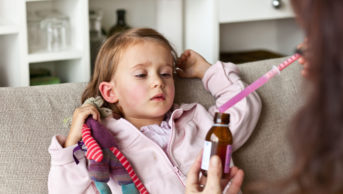
Nuttapong Wongcheronkit / Alamy Stock Photo
Methadone, a drug prescribed as a heroin substitute, is responsible for more toddler deaths by unintentional poisoning in the UK than any other prescription drug, research shows.
Reporting in the Archives of Disease in Childhood
[1]
(online, 16 May 2016), researchers analysed national data on childhood poisonings, hospital treatment and admissions to intensive care for unintentional poisoning between 2001 and 2013. They found that 28 children aged under four years died in England and Wales from unintentional poisoning with a prescribed drug; methadone was involved in 57% of cases (16 cases).
Between 2002 and 2012, 201 toddlers were admitted to intensive care for unintentional poisoning with prescribed drugs, and the drugs responsible were identified in 115 cases. Benzodiazepines accounted for 19% (22 cases) and methadone accounted for a further 17% (20 cases).
“It is vital that prescribers ask patients repeatedly about the presence of children in their homes and adapt advice and/or practice accordingly,” say the researchers, led by Mark Anderson, a consultant paediatrician at Great North Children’s Hospital in Newcastle upon Tyne.
“In some cases, it may be appropriate to return to supervised administration,” they suggest, adding that the use of buprenorphine, which may be safer than methadone, should also be considered, but it may not be as effective as methadone.
The number of hospital admissions for preschool children who have been unintentionally poisoned decreased by 23% in England between 2000 and 2011. This is in part because of greater public awareness of the need to store medicines safely and wider availability of reliable toxicological information on the relative risks associated with ingestion of pharmaceutical products in this age group. However, the researchers argue that there is a need for robust and systematic recording of the medication involved in, and circumstances surrounding, all exploratory ingestions that result in significant harm to young children. “This requires regular review to inform targeted public health interventions to avoid these tragedies,” they say.
In 2013–2014, the National Poisons Information Service received more than 14,000 calls from healthcare professionals about suspected childhood poisonings, many of which related to prescribed drugs. Although severe side effects and deaths are rare, certain medicines can be fatal for a toddler swallowing only one or two adult doses, including tricyclic antidepressants, antipsychotics, quinine, calcium channel blockers, opioids and oral hypoglycaemic drugs.
The researchers point out that, because of their underlying condition, patients prescribed methadone “are potentially least able to guarantee it will not be accessible to young children”. And previous UK surveys have demonstrated that many patients taking methadone were not aware of its dangers to children and do not recall being given safe storage advice, the researchers say.
Duncan Hill, specialist pharmacist in substance misuse at NHS Lanarkshire, says local policies and guidelines on the provision of opioid substitute medication to be taken at home should include a risk assessment of the potential access of children to the medication.
“Many services have developed Safe Storage leaflets for patients and will get an agreement signed by the patient to acknowledge that any take home doses will be stored safely and out of the reach of all others,” he says. “Some health organisations also provide medicine boxes that would prevent access by using both a padlock and a child safety device.”
Community pharmacists should alert the prescriber or drug services if they have a concern about a patient or their family in relation to the storage of medication, suggests Hill, because they will generally see the patient more regularly than the patient’s addictions nurse, prescriber or social worker.
References
[1] Anderson M, Hawkins L, Eddleston M et al. Severe and fatal pharmaceutical poisoning in young children in the UK. Archives of Disease in Childhood 2016. doi: 10.1136/archdischild-2015-309921


